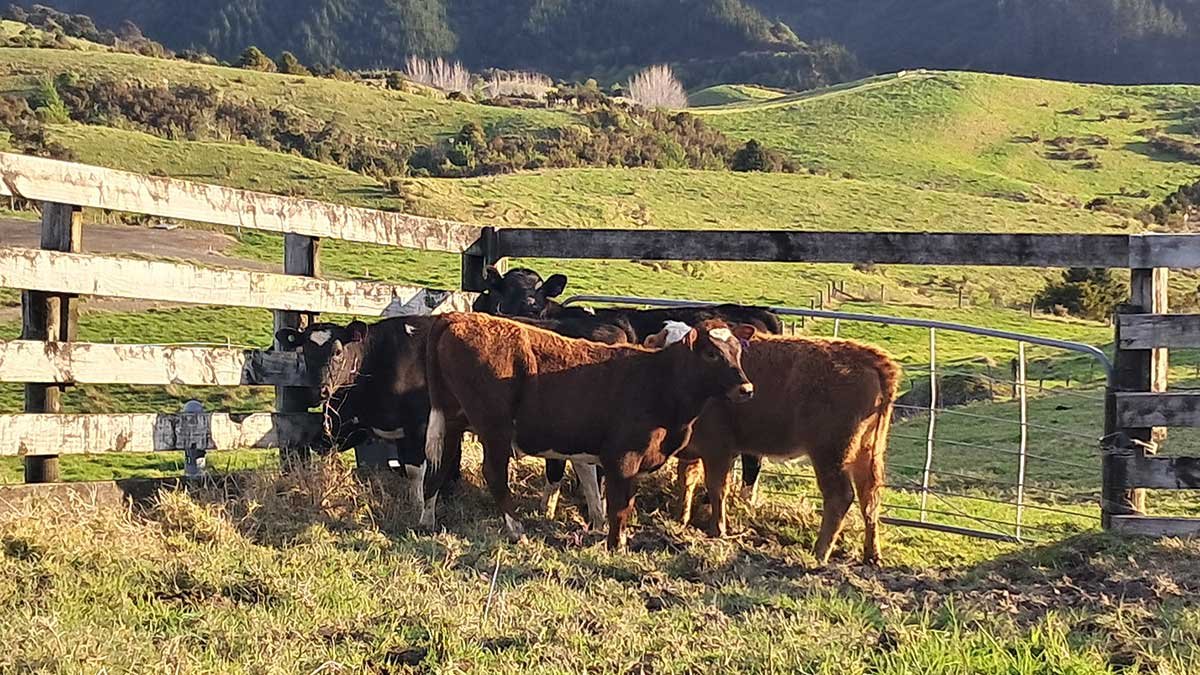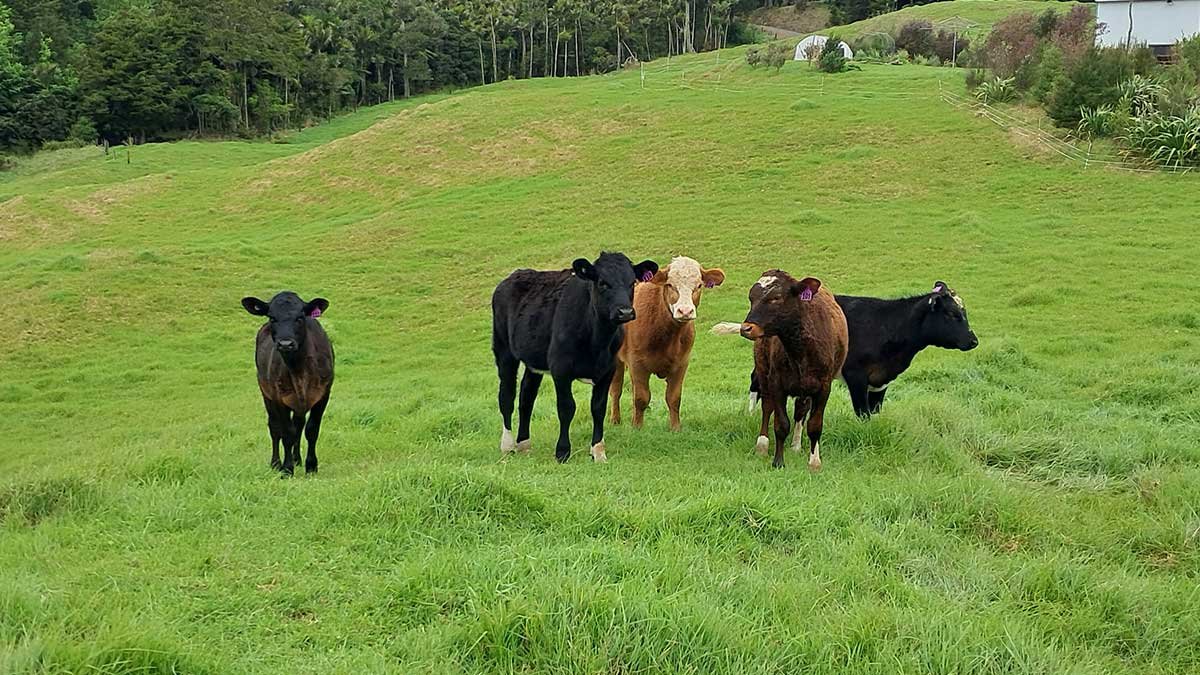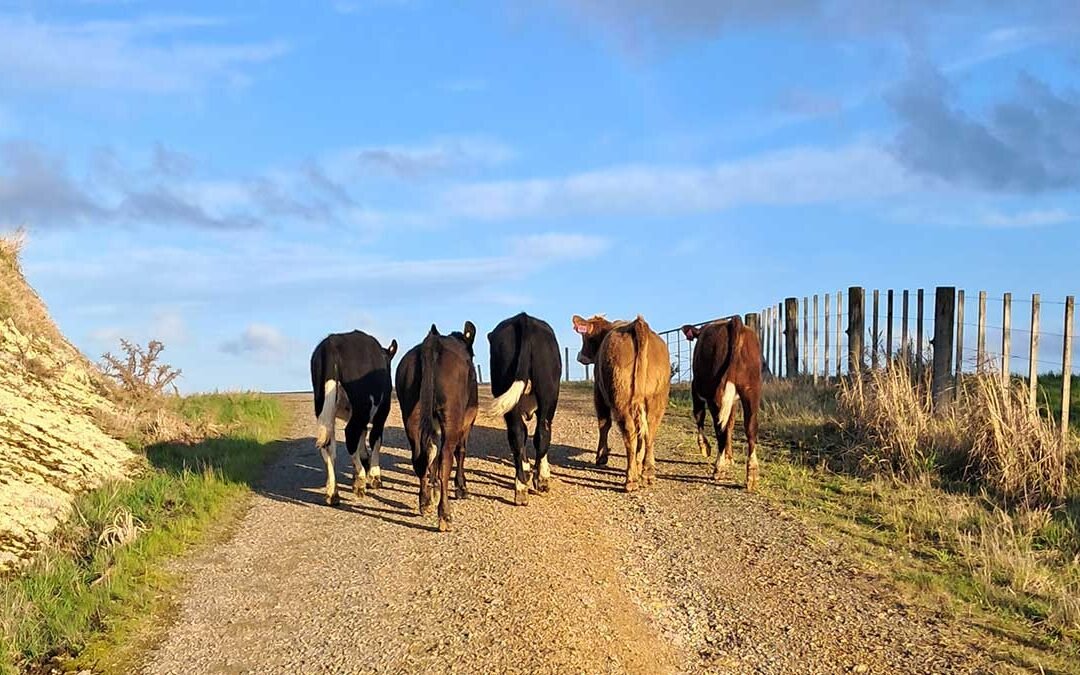This week we welcomed our fourth herd of cattle onto the farm. They are five, six-month-old Hereford-cross heifers.
Our paddocks have been empty since April when we sent the third herd off. Over winter, we’ve allowed the grass to grow, and taken the opportunity to upgrade and repair our fences.
Having the stock off during the wet season has been really beneficial for our soils, and I have no regrets about it.
No heavy animals means no pugged compacted soils, no muddy patches, and – presumably – less erosion and run-off.
But now spring is here. Grass growth is picking up, and the pressure was literally growing to get some new lawnmowers.
The requirements
We use a stock agent to buy our cattle. It’s just easier. But we have found it pays to be thoughtful about your request.
This time, we wanted to get a balance between cows that would be fairly easy to look after; and paying the right price.
The list I sent our agent in May looked like this (the italicised explanations are for you, dear reader – in case you don’t know. I did not ‘splain farming terms to my stock agent):
- 6 x weaned heifers (female cows who eat grass and have not had a calf – the variable left open here is age)
- Under $500 each
- Electric fence trained/easy nature
- Polled (naturally don’t grow horns) or de-horned (horns surgically removed)
- Preferably drenched (given an anti-worming treatment) and vaccinated.
I think most of it is self-explanatory to most people. But we didn’t want horns on our stock this time because it can make them harder to transport.
Trucks won’t take the cattle if their horns reach beyond their ears. And dehorning is a process that must be performed by a vet, and which I would rather not be involved with.
We haven’t had problems with our horned cattle so far; but it’s a lot less stress if they just don’t have them.
But that particular combination of features (particularly the price) was something we knew we’d probably have to wait a while to nail. We waited, and waited. And eventually we did have to budge on the price.
You see, the third herd taught us that you pay for cheap cows in fencing supplies and your sanity. In the end, we compromised.
Compromises
You might have noticed I said we had five new cows, but I asked for six.
We ended up paying $570 per heifer + taxes + fees, and those fees have gone up since our last purchase too. It came out to about $660 each in the end, and we’ve still got the transport bill (probably around $150) to come in.
We managed to get the second and third herds for under $500 (+ taxes and fees) each; but that’s just not where the market is at the moment. So reducing the head count by one kept us closer to the overall budget.
It’s not ideal. Long-time readers will know that we already understock. Using more conventional stocking rates, we could have up to 12 cattle on our property. But our paddocks are hilly, and I don’t honestly believe they should have cattle on them at all.
Six cattle have worked really well to control the grass growth without a huge impact on the soils. We’ve never had muddy patches with six, even through an entire year of rain. We have always had plenty to feed them, even through drought.
It seems to be the magic number, and while five won’t be worse on the environment, it might not quite hit the same balance.
We’ll see what happens. We’ve got some wriggle-room to add a couple more cattle to the herd, depending on how things go.
Be ready in 3 hours
We have been “ready” for our new cattle since we sold the last crew. We’ve had the electric fence off all winter, but all we needed to do was flick it on.
And given this is the third spin on this particular ride, we knew the drill. Our stock agent would purchase the cows on our behalf at the Kaikohe sales on a Wednesday, and they’d be delivered to our communal stockyards in the late afternoon/early evening.
So when he let us know at 2:30pm that there were five heifers on the truck, it was really just a matter of waiting for them to show up. Which they did, just before 5pm.
We left the dogs at home, set up some guiding tapes, opened and closed the gates into the right configuration, and headed up on the quad bike to get them.

It always makes me nervous shifting new cattle the kilometer or so from the yards to our property. There’s a couple of spots where they could drop off into the bush and make life much harder on us.
But we moved them past those spots quickly and got them down without incident.
They arrived in their new paddock as the sun was setting.

Getting to know you
Each of the girls has different markings which is helpful for telling them apart.
Three look like they are Hereford x Angus, and the other two might be crossed with Devon – I’m no expert and none of the paperwork I’ve seen so far specifies.
It doesn’t honestly matter that much when the goal is to get the grass eaten.
They each come with a hot pink numbered ear tag that corresponds with their NAIT registration, which is a nice added bonus. Without a NAIT reader it’s usually much harder to match the physical cows to their paper-trail.
But the ear tags make it pretty simple – even from a respectable distance.

They are less flighty than our third herd, but they’re also still settling in. I think they’ll get pretty friendly in time – especially once it’s warm enough to begin cutting down and feeding out banana palms in November!
They arrived at an average of 155kg – about 6 months old. So they’ll be with us until Autumn 2026 when we’ll get in touch with our livestock agent to repeat this whole process all over again.
Until then, we hope they’ll have relaxed nice times here at The Outpost. They’re part of the family while they’re here, and we do our best to give them nice lives in that time.
I’m looking forward to getting to know them better as they get used to us, our farm, and the rhythms here.



A lovely post, Kat. Thanks for sharing about your new additions.